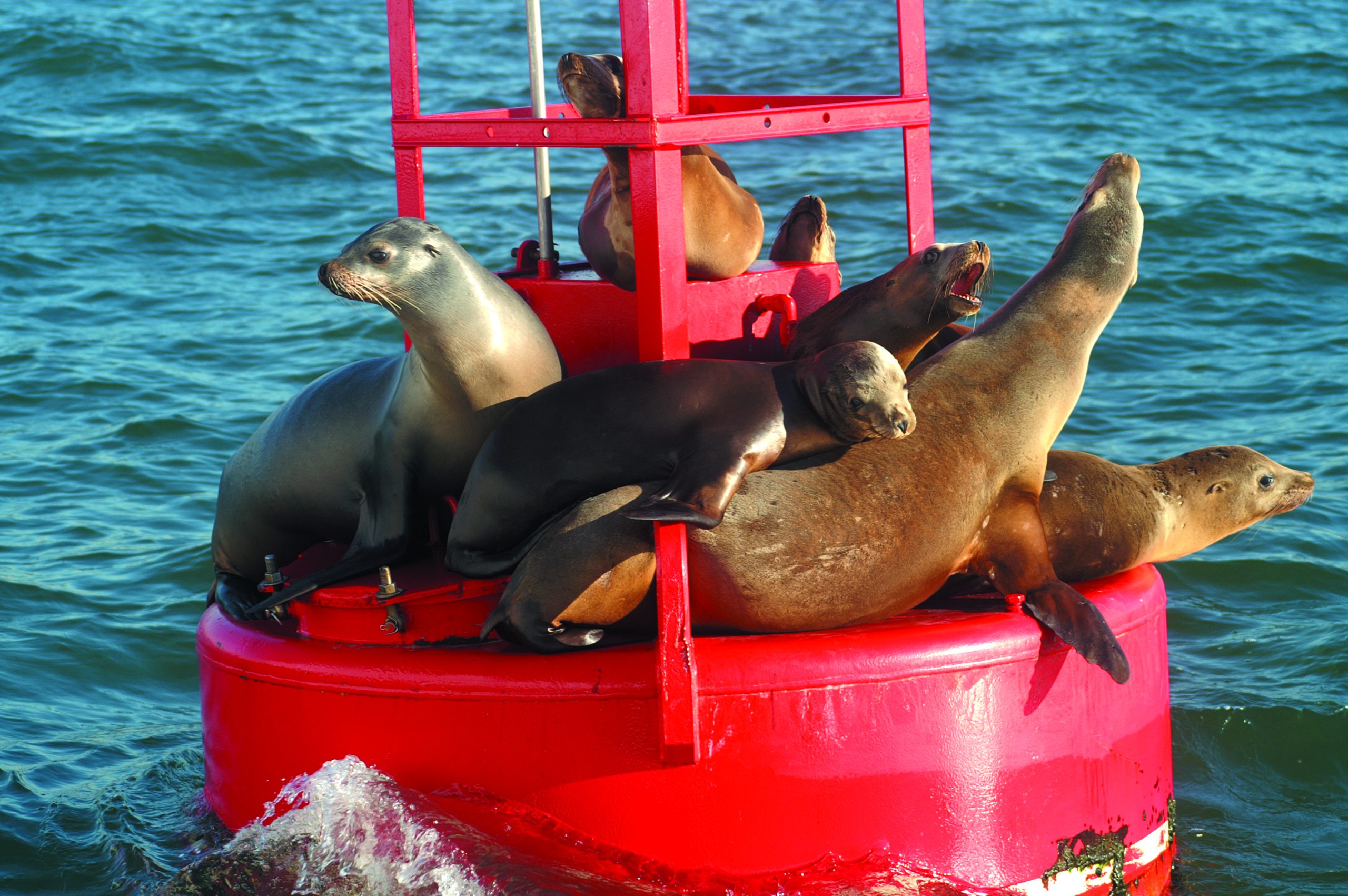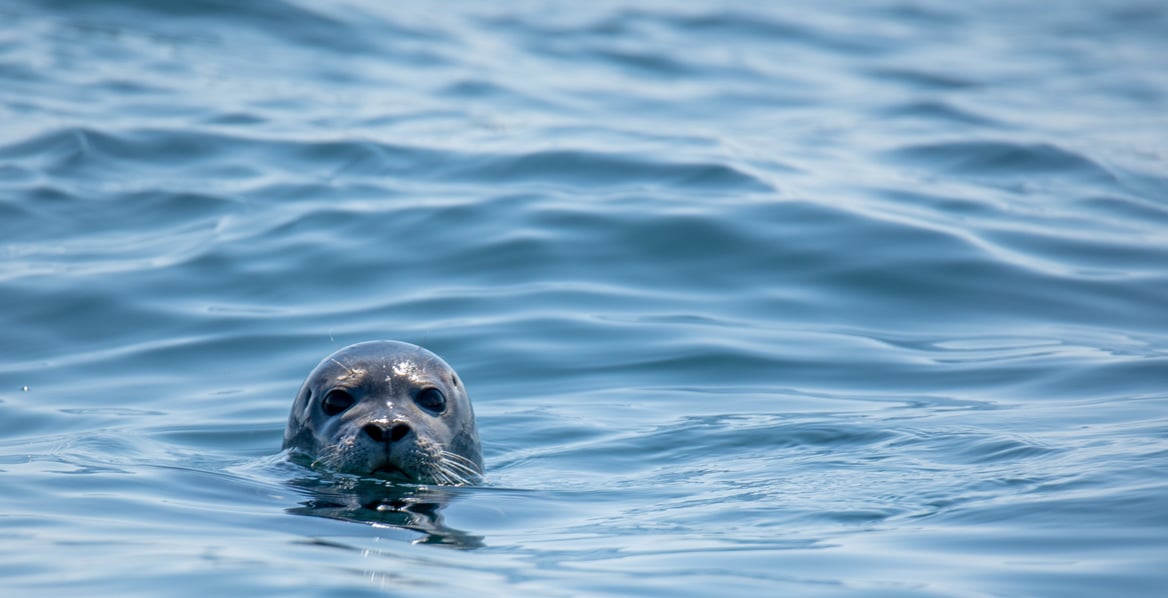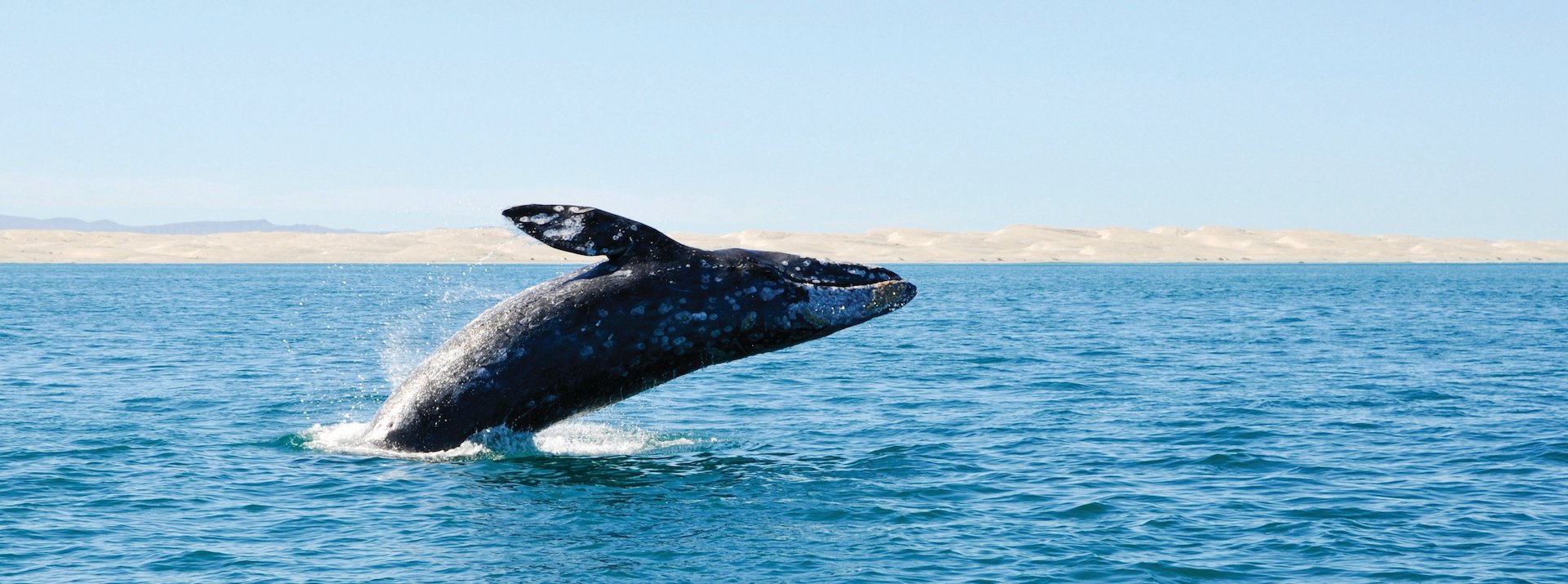Featured in this post
Keep Exploring
San Diego, California
Essential San Diego
Explore More
SSan Diego is a coastal paradise known for its stunning beaches and incredible marine life. If you are looking for an unforgettable marine life experience in this sunny city, then look no further than City Cruises for incredible adventures to witness sea lions, whales, and all the majestic beauty of these creatures in their natural habitat. Join us for a unique opportunity to explore San Diego’s beautiful waters and discover why these tours are a must-do for anyone visiting or residing in the San Diego or greater Los Angeles area.
DESCRIPTION:
 Adult male California sea lions are typically chocolate brown and are easily distinguished from females by the raised bump on their forehead called a sagittal crest. Males also grow much larger than females, reaching lengths of 6.5 to 8 feet (2–2.5 meters) and weighing 440 to over 880 pounds (200–400 kilograms). Adult females are usually blond in color, are about 5 to 6.5 feet (1.5–2 meters) in length, and weigh 110 to 240 pounds (50–110 kilograms).
Adult male California sea lions are typically chocolate brown and are easily distinguished from females by the raised bump on their forehead called a sagittal crest. Males also grow much larger than females, reaching lengths of 6.5 to 8 feet (2–2.5 meters) and weighing 440 to over 880 pounds (200–400 kilograms). Adult females are usually blond in color, are about 5 to 6.5 feet (1.5–2 meters) in length, and weigh 110 to 240 pounds (50–110 kilograms).
RANGE & HABITAT:
California sea lions range along the Pacific coast of North America and within the Gulf of California. They are often spotted hauled out of the water resting and playing on docks, jetties, beaches, and buoys or swimming or resting nearby.
DIET:
California sea lions are carnivores—they only eat meat. These active hunters prey on a variety of fish, small stingrays, squid and octopus. While they have excellent eyesight both in and out of the water, they often rely on their sensitive vibrissae (whiskers) to detect and follow the movement of prey in dark or murky water conditions.
REPRODUCTION:
Most of the California sea lion rookeries (pupping grounds) are on islands in the southern part of their range from the Channel Islands off Southern California into the Gulf of California. Usually in June or July, an adult female gives birth to a single pup that she nurses for six to twelve months. The mother will leave her pup to search for food. Pups at a rookery will socialize and play in groups called creches. When she returns to the rookery, the mother can locate and recognize her own pup by its smell and vocalizations.
California into the Gulf of California. Usually in June or July, an adult female gives birth to a single pup that she nurses for six to twelve months. The mother will leave her pup to search for food. Pups at a rookery will socialize and play in groups called creches. When she returns to the rookery, the mother can locate and recognize her own pup by its smell and vocalizations.
BEHAVIOR:
California sea lions are extremely noisy, social, and playful animals. They are well-known for their distinctive barking. Like other pinnipeds (seals, sea lions, and walruses), California sea lions haul out from water onto land to rest and socialize. They often rest in tightly packed groups at the haul out or at the water’s surface in groups called rafts. Sea lions often surf the waves or porpoise like a dolphin when playing, traveling at high speeds, or feeding.
PREDATORS:
California sea lions are preyed on by large sharks, particularly great white sharks, and orcas/ killer whales.
STATUS & CONSERVATION:
While California sea lions are not endangered or threatened, the population has declined in the past few years due to an unusual mortality event. Between 2013-2016, more than 9,000 California sea lion pups and yearlings stranded along the California coast. Most of the stranded pups were abandoned too early by their mothers and were emaciated, dehydrated, and underweight when rescued. The mothers weaned their pups early because they unable unable to find enough high-quality prey like sardines near the rookeries. As a result, the mothers could not produce enough milk to continue to nurse their pups.
If you see a stranded sea lion be sure to notify a local marine mammal stranding network. NOAA Fisheries has contact information for the network of marine mammal rescue organizations all along the Pacific Coast of the United States. These rescue centers all have well-trained and highly-qualified staff that may be able to rescue, rehabilitate, and return these malnourished sea lions to the sea when they reach a healthy weight.

DID YOU KNOW?
California sea lions are a type of pinniped; a group of marine mammals that includes all seals, sea lions, and walruses. Sea lions and fur seals are further grouped in the Otariidae family of “eared seals” which share the key characteristic of external ear flaps unlike “true seals” and walruses, which just have a tiny opening on each side of the head.
As you watch sea lions moving around on the shore or docks, you’ll notice that they can tuck their hind flippers beneath their body and use all four flippers to “walk” around, which is another eared seal characteristic. Sea lions also have long, wing-like front flippers that they move up and down to fly through the water.
The “trained seals” commonly seen in zoos and aquariums are California sea lions.
You can see California sea lions on most City Cruises San Diego vessels or on a Whale & Dolphin Watching Adventure Cruise and enjoy the best sightseeing on San Diego Bay.
You will marvel at the fascinating marine life while listening to onboard narration by the San Diego National History Museum.
Join us on the water as we search for Gray Whales (winter), Blue Whales (Summer), Minke Whales, Fin Whales, dolphins, sea lions, marine birds and much more! As we cruise, we’ll see up-close views of the bay’s wildlife as well as iconic landmarks from a new perspective. Onboard our staff will provide live narration and details about the aquatic life and landmarks we pass for a truly memorable experience. You’ll have plenty of opportunities to capture all the sights in photos and video. Click here to view our Whale Watching Report.

Original Post Date: Decemer 3, 2018
Featured in this post
Keep Exploring
San Diego, California
Essential San Diego
Explore More

 Discover Experiences Near Me
Discover Experiences Near Me
